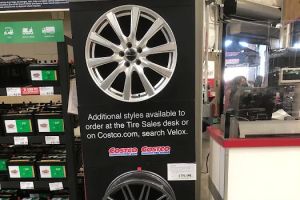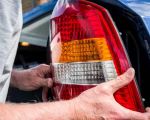How to Diagnose Common Car Problems Quickly: A Driver’s Guide
As a car owner, I’ve come to realize that nothing is more frustrating than being on the road and suddenly hearing strange noises, feeling vibrations, or seeing warning lights on the dashboard. Over the years, I’ve learned to take a deep breath and handle car issues with a level head, because quick and effective diagnosis can save both time and money. From a flat tire to engine troubles, the ability to diagnose common car problems quickly has become an invaluable skill.
In this article, I’ll walk you through some of the most common car problems you may encounter, how to diagnose them, and provide some tips on how to troubleshoot effectively. Whether you’re a seasoned driver or a new car owner, knowing how to identify issues early can help prevent bigger problems down the line. Let me share some of my experiences and the steps I take to quickly address car troubles when they arise.

Costco Tire Center
43621 Pacific Commons Blvd, Fremont, CA 94538, USA
1. Listening for Warning Signs: When Your Car Starts Making Strange Noises
One of the first signs that something might be wrong with your car is the sound. I’ve often found myself driving and suddenly hearing a clicking, squealing, or grinding noise. These noises can be a red flag, and the key is knowing what they mean. Let me walk you through a few common sounds and what they could indicate:
- Clicking Noise: If you hear a clicking noise when turning the steering wheel, it could be a sign of a worn-out CV joint. This is a part of the axle that allows your wheels to turn smoothly. If left unchecked, it could lead to further damage.
- Squealing Noise: Squealing noises when braking often point to worn brake pads. I’ve learned that it’s crucial to replace these before they cause more damage to the brake rotors, which could be a costly fix.
- Grinding Noise: If your car makes a grinding noise when shifting gears, it could be an issue with the transmission or the clutch. This is one of those problems that you should address immediately to avoid further damage.
By paying attention to these noises, I’ve been able to catch minor issues early before they became major headaches. If you hear anything unusual, don’t ignore it. The sooner you diagnose the issue, the quicker and cheaper the repair will be.

Auto Service Center
6353 Ventura Blvd, Ventura, CA 93003, USA
2. Dashboard Warning Lights: What They Really Mean
I used to panic every time a warning light popped up on my dashboard, but over time, I’ve learned to take a more measured approach. Some lights require immediate attention, while others are less urgent. Here’s a breakdown of what some of the most common dashboard warning lights mean:
- Check Engine Light: This is the one that used to make me nervous. A glowing check engine light can indicate anything from a loose gas cap to a serious engine issue. If it comes on, I recommend pulling over to check the gas cap first (it’s an easy fix). If the cap is fine, it’s time to get the engine scanned to determine the exact issue.
- Oil Pressure Light: This light indicates a drop in oil pressure. If it comes on, I always pull over immediately and check the oil level. Running your engine without proper oil pressure can cause severe damage.
- Battery Warning Light: When this light comes on, it often indicates an issue with the alternator or the battery itself. I’ve learned that it’s best to get this checked quickly, as a failing battery or alternator can leave me stranded.
- Temperature Warning Light: This indicates that the engine is overheating. I once ignored this warning and ended up needing a radiator replacement. If this light comes on, I stop the car, let it cool down, and check the coolant level.
Understanding what these warning lights mean has saved me from unnecessary breakdowns. In some cases, it’s an easy fix, but in others, it might indicate a more serious problem that needs professional attention.
3. Common Problems with the Tires: Diagnosing Issues on the Spot
Flat tires or low tire pressure are some of the most common issues I’ve dealt with on the road. It’s always helpful to have a basic understanding of tire diagnostics so I can address the problem as soon as it arises. Here’s how I approach tire problems:
- Low Tire Pressure: If you feel that your car is pulling to one side or hear a hissing sound, it could be a sign of low tire pressure. Many cars now have a tire pressure monitoring system (TPMS) that alerts you when pressure is low. If you don’t have TPMS, a simple tire gauge can help you check the pressure. If it’s low, I stop by a nearby gas station to refill the tires.
- Flat Tire: I’ve had to deal with a flat tire more than once, and I’ve learned how to change it myself. If you don’t have a spare tire or the necessary tools, most roadside emergency services can help with flat tire repairs or replacements.
- Tire Wear: Uneven tire wear can be a sign of alignment issues or worn-out suspension parts. I always make sure to rotate my tires regularly to prevent uneven wear and extend their lifespan.
Diagnosing tire problems quickly helps me avoid being stranded or causing further damage to my car. A simple tire check can save you time and money in the long run.
4. The Importance of Checking Your Battery and Electrical Systems
One issue that I’ve personally had to deal with a few times is a dead battery. The first sign is usually when my car refuses to start, or there’s a clicking sound when I turn the key. Over the years, I’ve learned to check my battery and electrical systems before they cause a major breakdown:
- Dead Battery: If the car won’t start, it’s likely a dead battery. I’ve learned to jump-start it using jumper cables or ask for roadside assistance to jump the car. If the issue persists, I’ll check the alternator and charging system.
- Battery Terminals: Loose or corroded battery terminals can prevent your car from starting. I carry a simple battery terminal cleaner to maintain good contact between the terminals and the battery.
- Dim Lights: If my headlights or dashboard lights appear dim or flicker, it could indicate an issue with the electrical system. I’ve learned to have the alternator and electrical system checked if this happens regularly.
By paying attention to these early warning signs and regularly maintaining my car’s battery, I can avoid being stranded with a dead car battery.
5. When to Seek Professional Help
While I’ve been able to diagnose and fix many common car problems on my own, there are times when I know it’s best to seek professional help. Some issues are too complex or risky to handle without proper training and equipment. For example:
- Engine Problems: If I suspect an engine issue, like unusual sounds or performance loss, I’ll consult with a mechanic. Engine issues can be complicated and expensive, so getting a professional diagnosis early can save me from larger repair bills later.
- Transmission Problems: If I notice that my car is having difficulty shifting gears or slipping out of gear, it’s best to have the transmission checked by a professional.
- Brake Issues: Brakes are crucial for safety, so if I notice anything unusual, like squealing or grinding sounds, I make sure to have them inspected immediately.
Knowing when to call a professional has saved me time, money, and hassle in the long run. It’s always better to err on the side of caution when it comes to complex car problems.
If you’re looking for professional car diagnostics or need quick roadside assistance, I highly recommend visiting Rescue & Towing. They connect you with reliable, fast, and experienced mechanics and towing companies, ensuring that you get the help you need when you need it most.




























